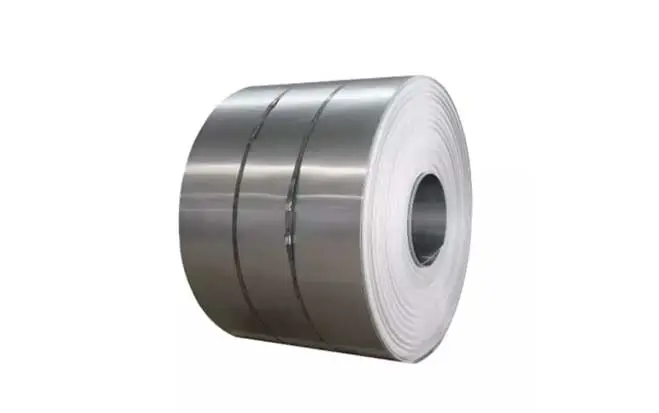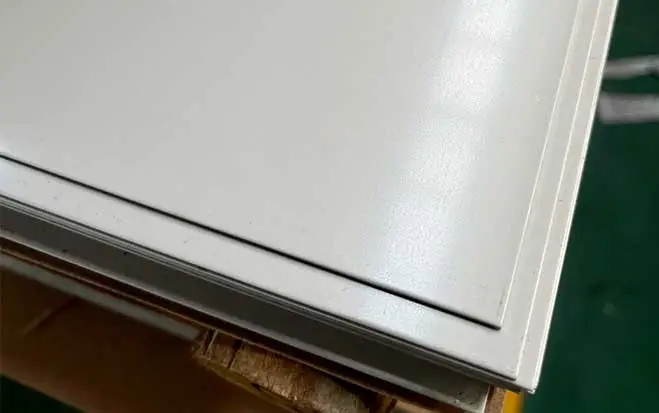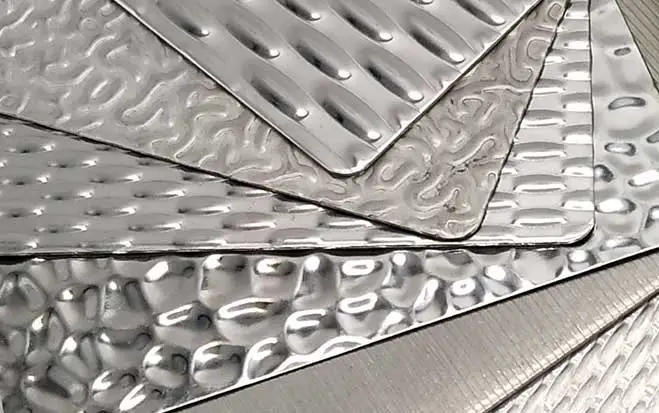304# stainless steel sheet material
201# stainless steel sheet material
The biggest difference between these metal materials depends on the corrosion resistance, with 304 being the best and 201 being next.
Sink surface treatment - Pearl surface
Pearl surface, also known as pearl silver surface, matte surface, pearl matte surface, etc., is created by surface treatment with a chemical electrolyte, similar to electroplating. This is the simplest process and the cheapest among all surface treatments. However, the drawback of this low-cost production process is that the stainless steel sink surface is not scratch-resistant, prone to scratches, and serious enough to cause the coating to peel off. Therefore, most companies are gradually replacing this process with other techniques.
Sink surface treatment - Mirror surface
Mirror surface is achieved by repeatedly polishing the surface of the stainless steel sink until it reaches a mirror-like effect. However, its drawback is that it is prone to scratches in daily use.
Sink surface treatment - Embossed surface
As the name suggests, a regular pattern is embossed on the surface of the sink or directly pressed with embossed sheet metal, followed by treatment with a pearl surface method. The visual effect of embossed surface is good, but over time, dirt can build up and become hard to clean.
Sink surface treatment - Matte surface
Also known as frosted surface. Fine sand particles are rapidly smashed into the surface of the sink, creating tiny grooves to enhance the hardness and scratch resistance of the sink surface. However, this treatment requires the basin to not be too thin.
Sink surface treatment - Brushed surface
Also known as a brushed surface, it is created by repeatedly brushing the surface of the stainless steel sink with a brushing device, resulting in a fine and smooth surface finish that gives a luxurious and classy feel. However, this surface treatment requires high-quality stainless steel sheets, equipment, and processes, which makes the price of the kitchen stainless steel sink naturally higher. Nevertheless, it provides a certain level of scratch resistance and durability.
1. Single basin type, 2. Double basin type, 3. Triple basin type, 4. Winged type
The single basin sink has a large basin body, making it more convenient and comfortable to use, with basin sizes currently available on the market exceeding 800mm in length. The design is more luxurious and stylish, making the price naturally higher.
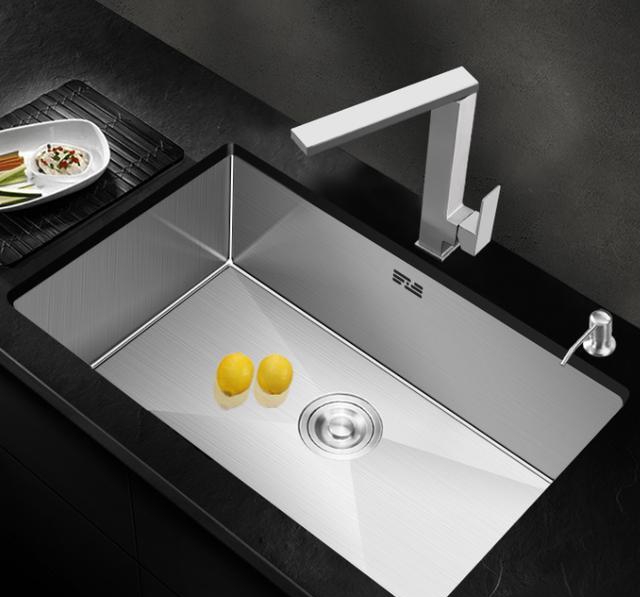
Stainless steel sink with single basin
The double basin sink is more practical, with the common configuration being a main basin plus an auxiliary basin, where the main basin is used for washing while the auxiliary basin is used for soaking.
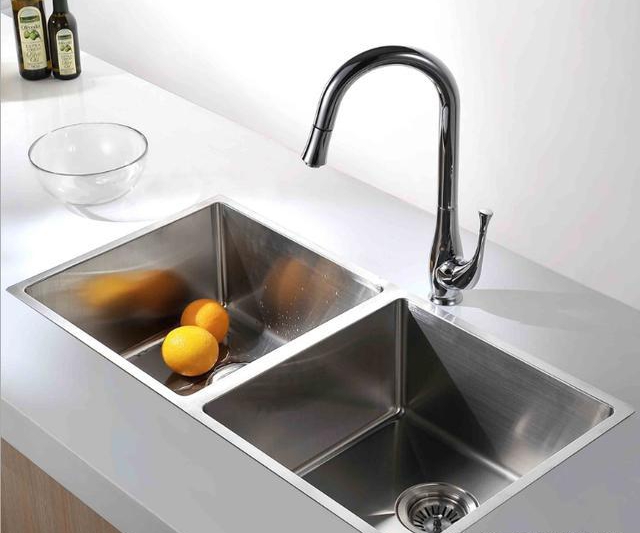
Stainless steel sink with double basin
The triple basin sink has more defined responsibilities, but its drawback is that the basin is large and suitable for large kitchens.
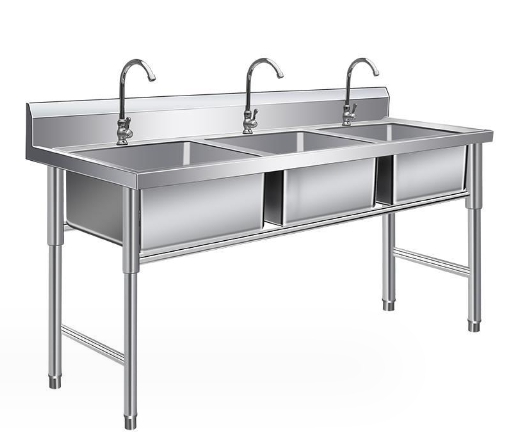
Stainless steel sink with triple basin
The winged sink is not very popular in the Chinese market but is more common in European and American countries.
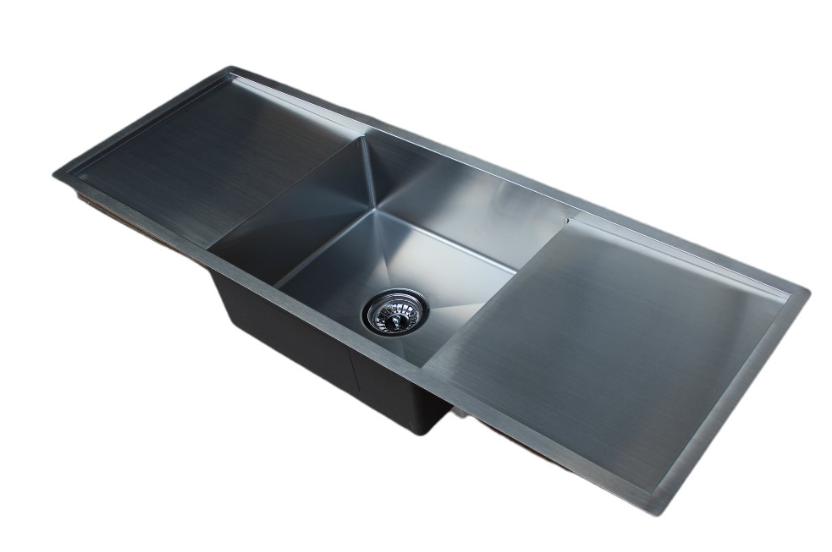
Stainless steel sink with wings
Drainage equipment may be an item that most customers overlook, but it is a very important component of sink accessories. A good stainless steel drain costs over 100 yuan, some of which include fully automatic drainage equipment. However, convenience does not always mean it's a good thing, as problems may arise after prolonged use!
Good stainless steel sinks are made of relatively thick sheets because it is difficult to determine the thickness at first glance due to the edge resolution of the sink. A simple method is to gently press the surface of the sink – if it yields, the material is too thin. Another method is to use a specialized measuring tool to measure the thickness.
Stainless steel plates are a non-ferrous metal with a specific gravity of 7.87. With the addition of heavy metals like nickel and chromium, the proportion of this metal material is greater than that of steel, making it heavier (of course, depending on the thickness of the sheet). If it is fake or inferior stainless steel, such as thick stainless steel plates, the weight is lighter.
There are two methods: stretch forming and integral forming. You may see some well-known brand sinks with the same specifications, but with significantly different prices. This is due to the raw materials and processing technology costs. Of course, it can be confidently stated that sinks produced by integral forming are superior to those welded by electric welding. Top-notch sinks are generally manufactured using integral forming, while brands also offer mid-range and low-end products, with the stretching forming method being easy to identify.
Related topic recommendations
Austenitic Vs Ferritic Vs Martensitic Stainless Steel
Is 409 Stainless Steel Magnetic
what is the difference between 304 and 321 stainless steel
what is PVD coating on stainless steel
Reflectivity of Stainless Steel

College degree, Internation trade Major of CHANGSHA ZHONGSHANG FOREIGN LANGUAGE UNIVERSITY.
Professinal exporting manager of NORMANDY METAL INDUSTRY CO.,LTD.
18 years working experience in STAINLESS STEEL MATERIALS INDUSTRY.

